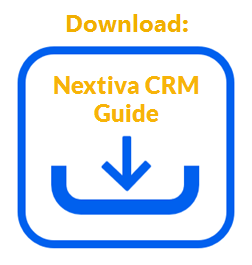During or after importing data to Nextiva CRM, you can see the current status, import
details, and troubleshoot any errors that may have occurred during the import. You can also choose to Import or Export data at the top right-hand corner.
- Click Administration Tools (wrench) at the top-right corner of the Nextiva
CRM window. - Under Advanced Settings in the left navigation panel, select Data Migration &
Integration. - On the Data Management page, click View Recent Imports.
- Click the Actions drop-down to view the import details or download the error file for the specified import.
Import History
Troubleshooting Data Import Errors
The following table lists some common errors that cause data import to fail, the reasons for the errors, and instructions for resolving them.
| Symptom/Sample Error Message | Reason | Resolution |
|
Unhandled exception or Unhandled error |
There is likely a duplicate ID (usually the unique ID used as the key, such as the Account ID number or Contact Name) in the data file (.csv). IDs must be unique. | Check the data file for duplicate IDs and make sure all IDs are unique. |
|
‘home_phone’: ‘Phone number +15591967401 is not valid’ or Work_Phone format invalid: Must be in the following format 8002857995 (US) or +441234567890 (International) |
The phone number is either not a valid number, does not contain the required 10 digits, or includes invalid special characters or symbols. | Make sure all phone numbers in the data file (.csv) are valid and contain at least 10 digits. Phone numbers with dashes, parentheses, and the plus (+) prefix are acceptable. Other special characters and symbols are not valid. |
|
‘Email xberts@nextiva is not valid’ |
The value for the Email field does not include the @ symbol followed by the full domain. | Make sure values for the Email field includes the @ symbol followed by the full domain (e.g. [email protected]). |
|
‘amount’: ‘”$20″ is not a number’ |
Currency is not an acceptable data type. | Modify the data file (.csv) to change the data type to Number and remove any symbols (e.g. $). |
|
‘Yes” is neither in (\’false\’, \’0\’) nor in ()’ or ‘No” is neither in (\’false\’, \’0\’) nor in ()’ |
The value for the True/False field is something other than TRUE, FALSE, or null (blank). | Make sure the data file (.csv) contains only TRUE, FALSE, or null (blank) as values for the True/False field. |
|
Integrity error |
During the mapping, the Administrator used a field that requires unique entries, but the spreadsheet contains duplicates or empty cells. |
Remove all duplicated data from the data file (.csv) before uploading it. or Re-create and map a new field that doesn’t require unique entries. |
|
Operation on empty object is not allowed |
There might be empty cells or rows in the spreadsheet that are used as matching data (unique identifier). | Either add information to the empty rows or delete the empty row. |
|
Unhandled exception error |
There are empty rows or cells, or there are too many records for one import. |
Remove all empty cells or rows. Split large imports into two or more files before uploading. There should be no issues with up to 10,000 entries, but it is more manageable to split them into smaller groups.
|
|
Does not match item in list…{item: list item} |
Only one value from a multi-select list can be imported. |
Make sure only one value for each multi-select field is listed in the data file. Add the remaining values to the multi-select list in the CRM after the data is successfully imported. |

